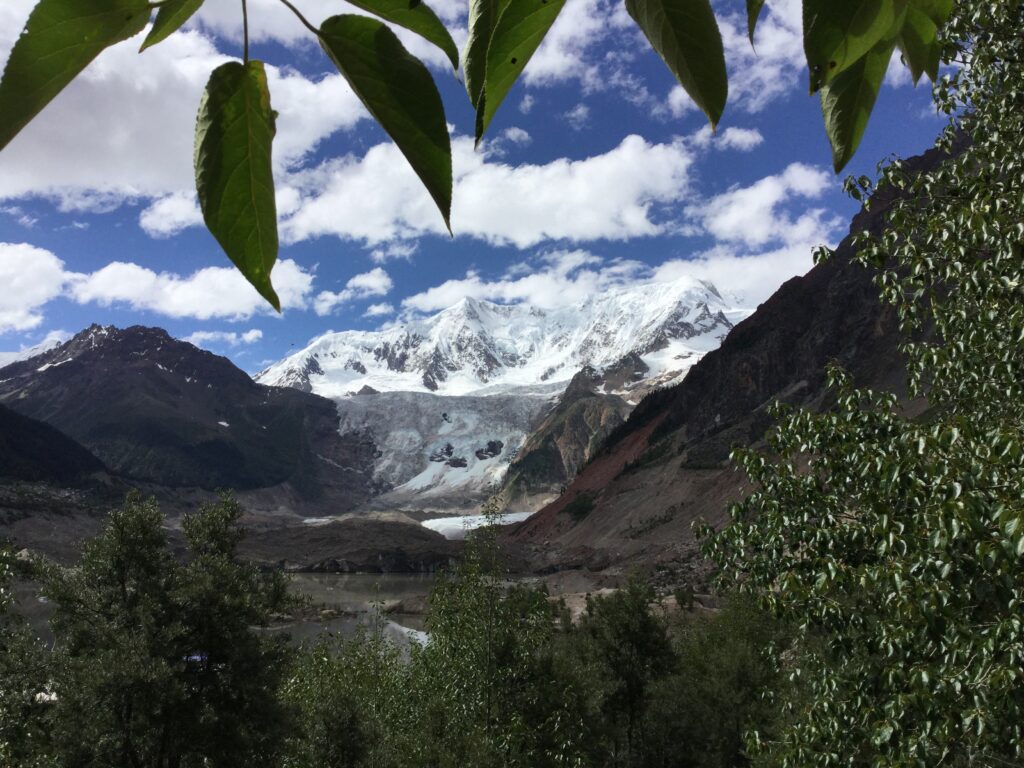For centuries, China’s mighty glaciers stood tall and unyielding, frozen guardians of the country’s vast mountain ranges. Today, however, these icy giants are melting at an alarming rate, silently bearing witness to the harsh realities of global warming. Over the past six decades, China has lost around 26% of its glacier area, an unsettling figure that paints a grim picture of what’s unfolding in some of the most remote corners of the planet.
A Disappearing Frozen World
Recent data shared by the Northwest Institute of Eco-Environment and Resources of the Chinese Academy of Sciences reveals the shocking scale of glacier loss in the country. At first glance, the increase in the number of glaciers might seem confusing. But in reality, it is a sign of fragmentation — large glaciers breaking apart into smaller ones as they melt. Worryingly, 7,000 small glaciers have vanished entirely during this period, a sobering indicator of just how rapidly these natural wonders are disappearing.
The Melting Giants of the West and North
China’s glaciers are primarily located in the rugged terrains of the west and north — the Tibetan Plateau, Xinjiang, and the provinces of Sichuan, Yunnan, Gansu, and Qinghai. These frozen reservoirs have served as critical water sources for millions of people, feeding some of Asia’s largest rivers like the Yangtze, Yellow, and Mekong.
The Tibetan Plateau, often called the “Third Pole” because of its massive ice reserves, holds particular significance. But the warming climate is causing severe ice loss here too. The region, once known for its eternal snow and ice, is now witnessing rapid melting — with consequences that stretch far beyond China’s borders.
The Bigger Picture: Global Glacier Crisis
China’s situation is not unique. A recent UNESCO report confirms that glaciers worldwide are retreating faster than ever before. In fact, the last three years recorded the most significant glacial mass loss in history. From the Arctic’s frozen lands to the snowy peaks of the Alps, from South America’s Andes to Asia’s Himalayan range — glaciers are vanishing.
The reason is simple yet terrifying: rising global temperatures driven by human activities, particularly the burning of fossil fuels. As the world heats up, glaciers — sensitive indicators of climate change — are among the first to suffer.
What’s at Stake? Water, Livelihoods, and Disaster Risks
Glaciers are more than just scenic wonders; they are crucial to life on Earth. They act as natural water towers, storing vast quantities of freshwater and releasing it slowly, feeding rivers and lakes that sustain agriculture, energy production, and drinking water supplies for billions.
In China, shrinking glaciers are expected to worsen water scarcity, especially in regions that already struggle with limited water resources. With less ice feeding the rivers, competition for water is likely to intensify, triggering conflicts and putting additional pressure on agriculture, industries, and local communities.
The risks don’t end there. Glacier retreat also heightens the threat of natural disasters. Melting glaciers can create unstable glacial lakes prone to sudden outbursts, causing devastating floods downstream. Landslides and other geological disasters become more frequent as frozen ground thaws, destabilizing entire mountain slopes.
China’s High-Tech Battle Against Melting Ice
Faced with this looming crisis, China isn’t standing still. In a bid to slow down the melting process, the country has turned to technology — deploying methods that sound like science fiction but are very real.
Among the techniques used are giant snow blankets, laid over sections of glaciers to reflect sunlight and insulate the ice beneath. Similar methods have been tested in Europe, where covering glaciers has shown some success in delaying seasonal melting.

Additionally, artificial snow systems are being used to increase the reflective surface area of glaciers, helping to reduce heat absorption. By spraying snow or ice particles, these systems aim to build up the glacier mass, buying precious time in the fight against climate change.
However, while these measures might help on a small scale, experts agree they are not long-term solutions. They can slow the melt but cannot stop it altogether, especially if global temperatures continue to rise.
The melting of China’s glaciers is just one part of a much larger and more frightening global story. As temperatures continue their upward trend, the world is inching closer to dangerous tipping points. Rising sea levels, extreme weather events, loss of biodiversity, and shrinking freshwater supplies are all symptoms of a planet in distress.
The UNESCO report makes it clear — if current emissions continue unchecked, glacier loss will accelerate, creating a cascade of economic, environmental, and social challenges worldwide. Countries dependent on glacier-fed rivers could see crop failures and energy shortages. Millions of people might be forced to migrate as their homes become uninhabitable.
The Road Ahead: Urgent Need for Action
Scientists and environmentalists have long warned that humanity is running out of time. The melting of China’s glaciers is a wake-up call, urging us to rethink our relationship with nature and act decisively.
China, like many other nations, has pledged to reduce its carbon emissions and invest in renewable energy. But achieving these targets requires global cooperation and immediate action. Transitioning away from fossil fuels, protecting fragile ecosystems, and investing in sustainable water management are critical steps.
Individuals, too, can play a role — by reducing carbon footprints, supporting clean energy initiatives, and raising awareness about the importance of glaciers and climate action.




